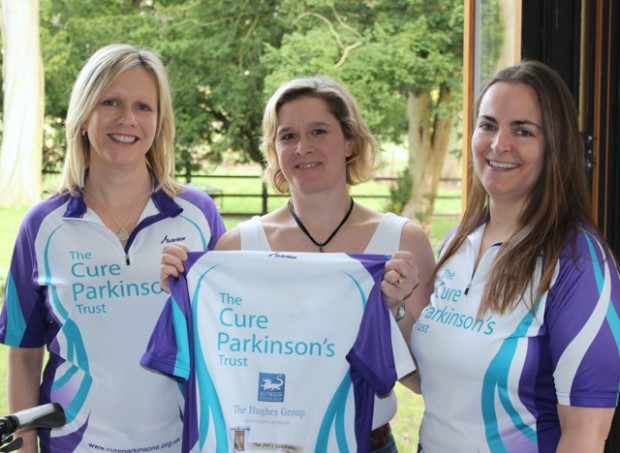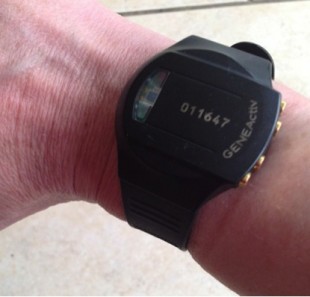To show just how accessible cycling is, we’ve asked Rachel Gibson, a Parkinson’s Disease sufferer, set to cycle from London to Paris in May 2013 to share her experiences as she trains for the charity ride.

Why chose a cycling challenge?
I’ve always been someone who has loved sport; over the last few years I’ve enjoyed the camaraderie and freedom of running off road with a group of friends. Unfortunately, due to a bout of Achilles tendonitis over the past 18-months, running has taken a back seat. Despite both physiotherapy and various other treatments, my right ankle refuses to play ball.
A school of thought has emerged that Parkinson sufferers are more at risk of tendon problems, possibly explaining my affliction. Some of the medication I’m prescribed to manage my Parkinson’s even notes musculoskeletal pain as a known side effect. Being unable to run, I rather reluctantly took up road cycling to get fit again, lose some weight and I have to admit, I’m really enjoying it.
Training and its beneficial effects
I’ve been training with two friends for the London to Paris ride in May. Sticking to our schedule through the long, cold winter, things are slotting into place and I’m finally starting to look forward to it. Training rides are now becoming longer and more frequent, but are beginning to pay off. We completed a 75-miler this week and still managed to get back in the saddle the next day. Feeling fitter and stronger and dare I say it, a little slimmer.
Most people know very little about Parkinson’s, believing it only affects old people who shake and shuffle. However, Parkinson’s can affect people of any age and with a whole range of symptoms such as anxiety and depression, disturbed sleep, constipation, pain and a whole host of other issues.
Exercise and my London to Paris training plan has definitely helped with my sleeplessness, as I’m so exhausted from training and raises self esteem and general feelings of wellbeing which has a knock on effect in reducing the episodes of depression.
Cycling and Parkinson’s Disease

Promising new research suggests that forced cycling with increased cadence, eases the symptoms of Parkinson’s. I’m set to participate in a clinical trial investigating the long-term benefits of exercise on Parkinson’s symptoms and for the last week I have been wearing an activity monitor. Should be rather interesting to find out if I really have the active lifestyle I like to think I have, or whether I’ve just been kidding myself for years!
It feels great to support a study that could potentially find a treatment that eases symptoms without the need for medication, as so many current drugs that are efficient at managing Parkinson’s have some very severe and unpleasant side effects.
The challenges of cycling long distances with Parkinson’s
In reality, the physical and psychological benefits of cycling are much the same for a person with Parkinson’s as for everyone else. However, there have been a few little extra challenges along the way.

The main consideration for me was whether or not to use clipless pedals or toe clips. Clipless pedals are more efficient and permit overshoes, helping keep my feet warm, but restrict movement. Toe clips are less restrictive, allowing occasional stretching of tired legs when stiffness from my Parkinson’s became painful. The clipless pedals have recently won the day mostly due to the need to have warmer, drier feet on longer rides. Overall, my clipped-in experiences to date have been mostly positive. Although a tip to remember: cleats are harder to release on steep hills with tired legs and falling into the verge is neither cool nor pretty.
The other inconvenience is the rather large amount of tablets I need to remember to pack into my bike bag. More importantly is remembering to take them on time. Effective control of Parkinson’s symptoms is dependent on drug levels. Taking my medication even 15 minutes late can significantly change my stiffness and ability to move easily.

Having spent years and wasted lots of money and time looking for the perfect pill container for all occasions, I think I have found the perfect box for long rides. My little blue box has 8 large compartments, space enough for all my tablets to have a time slot each and an integrated alarm that ensures I don’t miss a dose. It does mean that I ride along rattling like a family pack of Skittles, but it has totally revolutionised the management of my drugs.
My last challenge will be the early morning starts. People with Parkinson’s often find they are stiffest when they wake up and normal speed of movement doesn’t come easily until the first dose of medication kicks in. This means, I will be setting my alarm much earlier than everyone else to ensure I get down to breakfast, I already feel sorry for my unlucky roommate.
Every situation has a silver lining.
There is always a good side to everything and having Parkinson’s on a charity bike ride is no exception. So many people have helped me along the way and their generosity is often overwhelming. There seems to be many more excuses available to me not complete the challenge because “I’ve got the problem” but each and every one of us have had our own personal challenges to overcome, given up our valuable time and energies to train and have our own incredibly inspiring reasons for taking on the challenge so we’re all sure to complete it. Plus being able to eat, as much cake as I like on long rides is a good enough reason as any.
I’m genuinely looking forward to the ride and meeting lots of incredible people who have fallen in love with cycling as much as I have. Moreover, since being introduced to cycling it seems to be the perfect mode of transport for people with Parkinson’s, so I hope to be in the saddle for many years to come.
Rachel has set up a fundraising blog to detail her ride and fundraising, please take some time to have a read and if possible donate some of your pennies.





